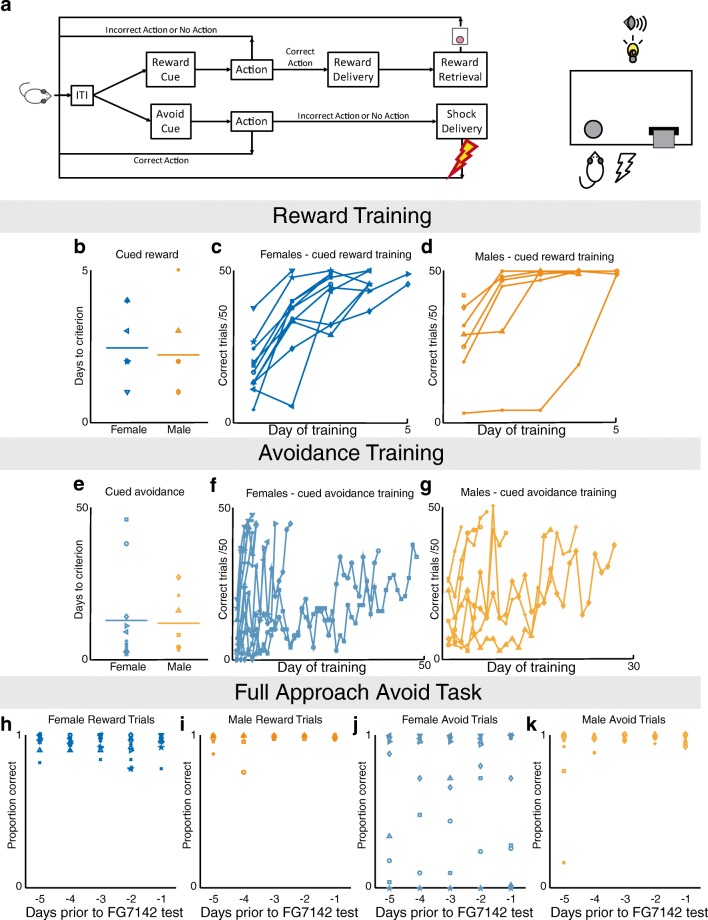Fig. 2.
Sex differences in acquisition of reward-seeking and punishment–avoidance behaviors. Rats were initially shaped on the reward-seeking and punishment-avoidance components of the task separately, before being trained on the combined full task (A) until stable performance emerged. Cued-action-for-reward performance was observed daily until animals achieved a criterion of 70% correct trials (B shows days to criterion of all individuals). Average and individual performance in females (C) and males (D) is shown, and sex differences were not observed in reward learning acquisition (males: 2.1 ± 0.4 days; females: 2.5 ± 0.3 days; t(16) = -0.583; p = 0.568). Cued-action-to-avoid performance is shown in similar fashion (E–G), again with no sex differences observed (males: 10.7 ± 3.1 days; females: 12.5 ± 4.6; t(16) = -0.288; p = 0.777). Performance in the full task over the five days before drug treatment is shown in H–K. No sex difference was found in the average performance on reward trials (males (N = 7): 49.2 ± 0.4 trials; females (N = 11): 47.5 ± 0.7 trials; t(16) = 1.733; p = 0.1). In the avoidance trials, on average, males successfully avoided the shock in more trials than did females (males (N = 7): 47 ± 1 trials; females (N = 11): 31 ± 6 trials; t(10.9) = 2.524; p = 0.03 (equal variances not assumed)).

